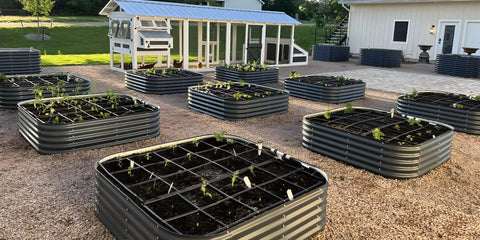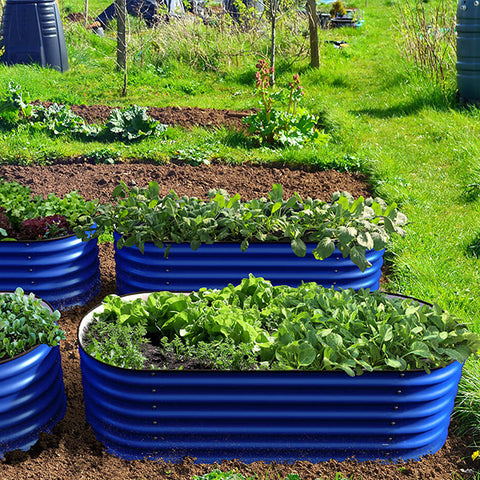Planting Garden Beds: Reducing Reliance on Machinery
In the context of increasing emphasis on environmental conservation and sustainable development, there is a growing interest in reducing reliance on machinery to decrease energy consumption and environmental pollution. Planting garden beds is a sustainable choice that minimizes the need for machinery while providing a diverse range of crops and beautiful landscapes. This article will explore in detail how planting garden beds can help us achieve the goal of reducing the use of machinery.
Design and Layout of Garden Beds
Garden beds, designed appropriately, offer an organic cultivation method that reduces dependence on machinery. Firstly, well-designed garden beds optimize soil utilization and plant growth conditions, reducing the need for plowing and land preparation machinery. Through efficient layout and division, garden beds can maximize soil and water resources, minimizing irrigation and fertilization requirements, thereby reducing the use of machinery.
Manual Cultivation and Horticultural Management
Compared to traditional large-scale farming, planting garden beds relies more on manual operations and horticultural management. Manual cultivation activities such as loosening soil, weeding, and harvesting can be carried out by hand, eliminating the need for large agricultural machinery. Additionally, horticultural management tasks such as pruning, fertilizing, and pest control can be performed through precise and targeted manual operations, reducing reliance on machinery. This not only reduces energy consumption but also improves the quality and yield of crops.
Composting and Utilization of Organic Fertilizers
In garden bed planting, composting and the use of organic fertilizers are key strategies to reduce the use of machinery. Composting waste and organic materials can produce high-quality organic fertilizers for garden beds. Organic fertilizers not only provide the necessary nutrients for plants but also improve soil structure and moisture retention, reducing the need for mechanical fertilization and irrigation equipment.
Multi-layer Planting and Companion Planting
Multi-layer planting and companion planting in garden bed cultivation are effective methods to reduce reliance on machinery. Multi-layer planting utilizes the vertical dimension of the bed space, allowing different height plants to be grown in the same bed, maximizing land utilization. This reduces the need for extensive land cultivation and minimizes the use of machinery. Companion planting involves growing complementary plants together, promoting growth, controlling pests and diseases, and providing wind protection and moisture retention. This planting method enhances the growth environment of crops while reducing the need for machinery.
Sustainable Waste Management
Garden bed planting also involves sustainable waste management. Waste generated from pruning, trimming, and harvesting can be composted or recycled for other purposes. By transforming waste into organic fertilizer or reusing it in different ways, reliance on waste disposal equipment and machinery can be reduced, promoting recycling and resource conservation.
Conclusion
Planting garden beds is a sustainable choice that minimizes the reliance on machinery through thoughtful design and layout, manual cultivation and horticultural management, composting and organic fertilizer utilization, multi-layer planting and companion planting, as well as sustainable waste management. This approach aligns with the principles of environmental conservation and sustainable development, while providing a diverse range of crops and beautiful garden landscapes. By choosing to plant garden beds, we can contribute to future agriculture and environmental development, and achieve a sustainable way of living.


